PTZ Security Cameras
The most advanced security camera in the market is a PTZ security camera. PTZ acronym stands for pan, tilt, and zoom. These cameras are equipped with motors for panning, tilting, and optically zooming the camera's lens. A PTZ security camera gives users 360 degree coverage from a remote location using a joystick or mouse. Panning allows a camera to rotate 360 degrees. By tilting, a PTZ security camera can move the imaging sensor straight down to capture objects directly below the camera.
PTZ Security Cameras by Brands
PTZ Security Cameras FAQ
What does PTZ camera mean?
A PTZ camera, or Pan-Tilt-Zoom camera, is a sophisticated surveillance tool that offers unparalleled flexibility and control. The "Pan" feature allows the camera to swivel horizontally, covering a wide area. "Tilt" enables vertical movement, adjusting the camera's angle. The standout feature is "Zoom," permitting optical magnification for detailed close-ups. Operable remotely or automatically, PTZ cameras are ideal for tracking moving subjects and monitoring expansive spaces. Equipped with advanced technology, they enhance situational awareness and minimize the need for multiple fixed cameras. Whether for security, monitoring, or surveillance, PTZ cameras provide dynamic and comprehensive coverage, empowering users with precise control over their visual environment.
Read More: What is PTZ camera? A Complete Guide
What are the differences between PTZ and panoramic camera?
PTZ (Pan-Tilt-Zoom) and panoramic cameras are distinct solutions, each offering unique advantages in surveillance. PTZ cameras provide the ability to pan horizontally, tilt vertically, and zoom in for close-ups, controlled manually or automatically. They excel in tracking moving subjects across expansive areas, enhancing flexibility. In contrast, panoramic cameras capture ultra-wide-angle views, often 180 or 360 degrees, in a single frame. They reduce blind spots and streamline installation by replacing multiple fixed cameras. While PTZ excels in real-time tracking, panoramic cameras offer comprehensive overviews. Choosing between them hinges on specific needs: precision tracking with PTZ or comprehensive coverage with panoramic – both pivotal for effective surveillance strategies.
More Details: PTZ vs. Panoramic: Which is Best for You?
What are the advantages of PTZ security cameras?
PTZ (Pan-Tilt-Zoom) security cameras offer a range of compelling advantages for modern surveillance needs. Their dynamic pan and tilt capabilities allow real-time tracking of moving objects, minimizing blind spots and ensuring comprehensive coverage. With powerful zoom functionality, PTZ cameras deliver detailed close-ups, vital for identifying subjects and assessing potential threats. Automated presets enable efficient monitoring of predefined areas. Additionally, PTZ cameras can respond to programmed triggers, enhancing situational awareness. Their flexibility reduces the need for multiple fixed cameras, optimizing costs and infrastructure. Whether safeguarding large outdoor spaces or critical indoor areas, PTZ security cameras provide precise control and versatility, bolstering surveillance effectiveness.
How do PTZ security cameras work?
PTZ (Pan-Tilt-Zoom) security cameras operate through sophisticated mechanics and technology. The "Pan" feature allows horizontal movement, swiveling the camera left or right. "Tilt" enables vertical adjustment, angling the camera up or down. The "Zoom" capability magnifies the image, capturing fine details. These movements can be controlled manually via a remote device or automated through programmed sequences and motion tracking. PTZ cameras often utilize motorized mechanisms for precise control. In modern setups, they can respond to triggers like motion detection or presets. The integration of PTZ cameras with advanced software enables remote monitoring, tracking, and optimal coverage of expansive areas, making them a cornerstone of effective surveillance systems.
Best Selling PTZ Cameras and Brands
-

Bosch MIC-7522-Z30B 2MP Starlight Outdoor PTZ IP Security Camera with 30x Optical Zoom and IP68
Brand: Bosch
Part Number: MIC-7522-Z30B$9,357.38- Field of View (Horizontal) : 2.10°Field of View 58.3°Field of View
- Lens Type : Motorized (Automatic Zoom) Lens
- Lens Size : 6.6~198mm Lens
- Sensor Type : CMOS
- Protection Code : IP68
- Color : Black
- Environmental : Outdoor
$9,357.38 -
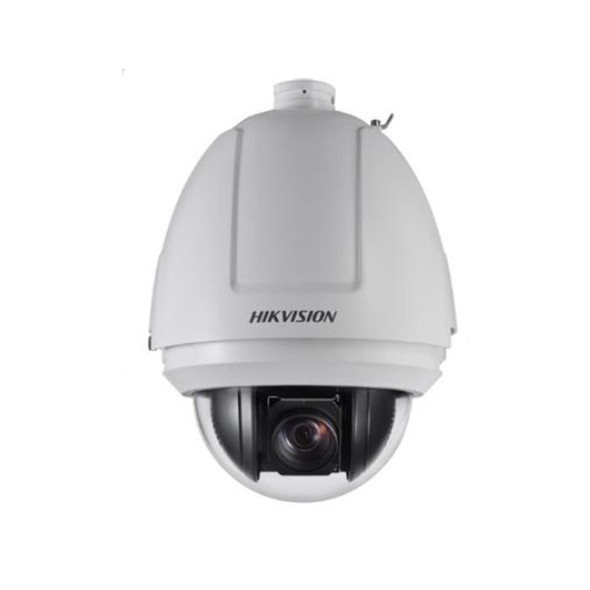
Hikvision DS-2DF5232X-AEL 2MP H.265 Outdoor PTZ IP Security Camera - 32x Optical Zoom
Brand: Hikvision
Part Number: DS-2DF5232X-AEL$2,348.00$1,742.16- Compression : H.265,
- Field of View (Horizontal) : 58.4°Field of View 2.14°Field of View
- Lens Type : Motorized (Automatic Zoom) Lens
- Lens Size : 4.8~153mm Lens
- Sensor Type : CMOS
- Sensor Size : 1/2.8" Sensor
- Protection Code : IP66
- Environmental : Outdoor
$2,348.00$1,742.16 -

Speco O4P4X2 4MP Outdoor PTZ IP Security Camera with 4x Optical Zoom
Brand: Speco
Part Number: O4P4X2$1,049.30$432.35- Compression : H.264, H.265, MJPEG,
- Lens Size : 2.8~12mm Lens
- Max. Storage Capacity : 256 GB Storage Capacity
- Protection Code : IP66
$1,049.30$432.35 -

Samsung Hanwha QNP-6320R 2MP Night Vision Outdoor PTZ IP Security Camera with 4.44~142.6mm Motorized Varifocal Lens
Brand: Hanwha Vision
Part Number: QNP-6320R$2,700.00$2,045.46- Compression : H.265, H.264, MJPEG,
- Field of View (Horizontal) : 64.66°Field of View 2.29°Field of View
- Max. FPS and Resolution : 60fps at 1080P
- Lens Type : Motorized (Automatic Zoom) Lens
- Lens Size : 4.44~142.6mm Lens
- Sensor Type : CMOS
- Sensor Size : 1/2.8" Sensor
- Max. Storage Capacity : 256 GB Storage Capacity
- Protection Code : IP66 IK10 NEMA 4X
- Color : White
- Material : Aluminum Hard-coated poly-carbonate
- Environmental : Outdoor
- Aperture : F1.6 F4.4
$2,700.00$2,045.46 -

Pelco ES6230-12 2MP Outdoor PTZ IP Security Camera with 30x Optical Zoom, Surevision 3.0
Brand: Pelco
Part Number: ES6230-12$4,459.79$3,526.82- Compression : H.264, MJPEG,
- Field of View (Horizontal) : 63.7°Field of View
- Max. FPS and Resolution : 60fps at 1920 x 1080
- Lens Size : 1.6~4.7mm Lens
- Sensor Type : Exmor CMOS
- Sensor Size : 1/2.8" Sensor
- Max. Storage Capacity : 2 TB Storage Capacity
- Protection Code : IP66 NEMA 4X
- Color : White
- Environmental : Outdoor
$4,459.79$3,526.82 -
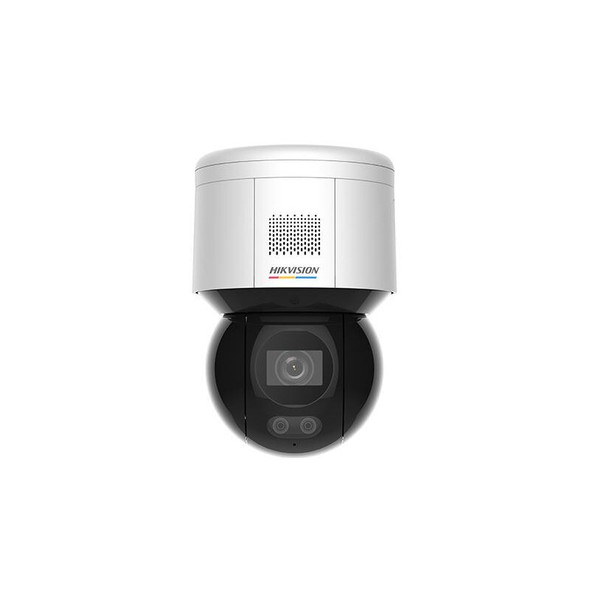
Hikvision DS-2DE3A400BW-DE 4MP ColorVu Outdoor Multi-sensor PTZ IP Security Camera with Built-in Microphone and Speaker
Brand: Hikvision
Part Number: DS-2DE3A400BW-DE$435.00$382.84- Compression : H.265, H.265 Plus, H.264, H.264 Plus, MJPEG,
- Field of View (Horizontal) : 88.7°Field of View
- Max. FPS and Resolution : 30fps at 2560 x 1440
- Lens Type : Fixed Lens
- Lens Size : 4mm Lens
- Sensor Type : CMOS
- Sensor Size : 1/1.8" Sensor
- Max. Storage Capacity : 512 GB Storage Capacity
- Protection Code : IP66
- Color : White
- Mount Type : Ceiling Mount
- Environmental : Outdoor Indoor
- Aperture : F1.0
- Number of PoE Ports : 1 PoE Port
- Audio Support : Built-in Microphone Built-in Speaker
$435.00$382.84 -
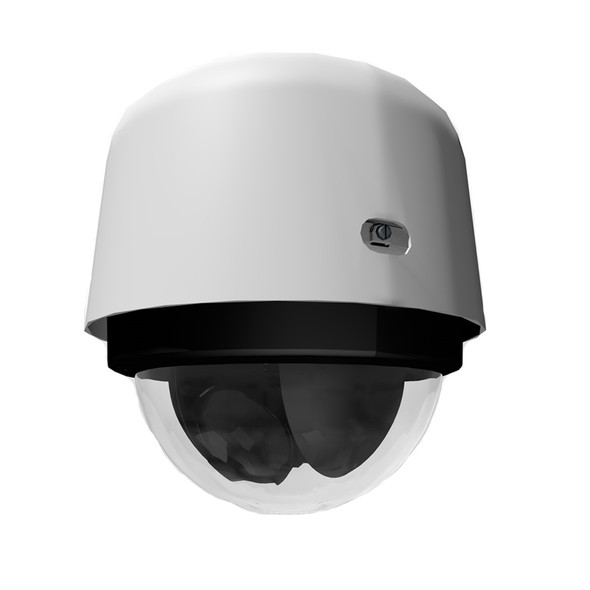
Pelco S7818L-EW0 4K Outdoor PTZ IP Security Camera with 18x Optical Zoom and Smoked Bubble
Brand: Pelco
Part Number: S7818L-EW0$4,525.46$3,441.55- Compression : H.265, H.264,
- Lens Type : Motorized (Automatic Zoom) Lens
- Max. Storage Capacity : 2 TB Storage Capacity
- Protection Code : IP67 IP66 IK10
- Color : White
- Environmental : Outdoor
$4,525.46$3,441.55 -

Dahua 22204ICLB 2MP Outdoor HD-TVI PTZ Security Camera with 4x Optical Zoom
Brand: Dahua
Part Number: 22204ICLB$483.99$287.55- Lens Size : 2.7~11mm Lens
- Sensor Type : CMOS
- Sensor Size : 1/2.8" Sensor
- Protection Code : IP66 IK10
- Environmental : Outdoor
- Aperture : F1.6 F2.7
$483.99$287.55 -

Hikvision DS-2DF8C842IXS-AELW(T2) 8MP IR H.265+ 4K Outdoor PTZ IP Security Camera with 42x Optical Zoom
Brand: Hikvision
Part Number: DS-2DF8C842IXS-AELW(T2)$4,495.15- Compression : H.265 Plus,
- Sensor Type : CMOS
- Sensor Size : 1/1.2" Sensor
- Protection Code : IP67
- Environmental : Outdoor
$4,495.15 -

Honeywell HC35WZ2R25 2MP Outdoor PTZ IP Security Camera, 25x Optical Zoom
Brand: Honeywell
Part Number: HC35WZ2R25$2,375.00$1,366.82- Compression : H.264, H.265, JPEG, Smart Codec,
- Max. FPS and Resolution : 60fps at 1920 x 1080
- Lens Size : 5~125mm Lens
- Sensor Type : CMOS
- Sensor Size : 1/2.8" Sensor
- Max. Storage Capacity : 256 GB Storage Capacity
- Protection Code : IP66 IP67 IK10
- Color : White
- Material : Aluminum
- Environmental : Outdoor
$2,375.00$1,366.82 -

ENS PDN6CEI445H-XR 4MP Outdoor Night Vision PTZ IP Security Camera with 45x Optical Zoom, H.265+
Brand: ENS Security
Part Number: PDN6CEI445H-XR$1,143.00- Lens Type : Motorized (Automatic Zoom) Lens
- Lens Size : 3.95~177.75mm Lens
- Sensor Type : CMOS
- Sensor Size : 1/2.8" Sensor
- Protection Code : IP67 IK10
- Environmental : Outdoor
- Aperture : F1.6 F4.95
$1,143.00 -

Hikvision DS-2DF8836IX-AELW 8MP IR H.265 Outdoor PTZ IP Security Camera
Brand: Hikvision
Part Number: DS-2DF8836IX-AELW$5,433.00$4,346.00- Compression : H.265 Plus, H.265, H.264 Plus, H.264, MJPEG,
- Field of View (Horizontal) : 2°Field of View 56°Field of View
- Lens Type : Motorized (Automatic Zoom) Lens
- Lens Size : 7.5~270mm Lens
- Sensor Type : CMOS
- Sensor Size : 2/3" Sensor
- Max. Storage Capacity : 256 GB Storage Capacity
- Protection Code : IK10 IP66
- Color : Black
- Environmental : Outdoor
$5,433.00$4,346.00 -

Mobotix Mx-p71A-4DN050 4MP Night Vision Indoor PTZ IP Security Camera with Built-in Microphone and Speaker, 95-degree FOV
Brand: Mobotix
Part Number: Mx-p71A-4DN050$948.00$829.50- Compression : H.265, H.264, MJPEG, MxPEG,
- Field of View (Horizontal) : 95°Field of View
- Color : White
- Environmental : Indoor
- Aperture : F1.8
- Audio Support : Built-in Microphone Built-in Speaker
$948.00$829.50 -

Panasonic WV-X6531N 2MP H.265 Outdoor PTZ IP Security Camera with 40x Optical Zoom
Brand: Panasonic
Part Number: WV-X6531N$5,255.00$4,007.00- Compression : H.265,
- Max. FPS and Resolution : 60fps at 1080P
- Lens Type : Motorized (Automatic Zoom) Lens
- Lens Size : 4.25~170mm Lens
- Sensor Type : MOS
- Sensor Size : 1/2.8" Sensor
- Protection Code : IP66
- Color : Gray
- Environmental : Outdoor
$5,255.00$4,007.00 -
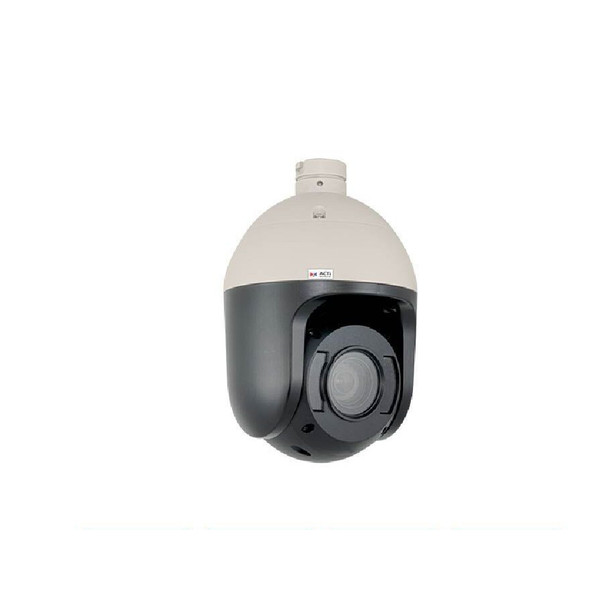
ACTi I98 2MP Outdoor PTZ IP Security Camera with 4.5-148.5mm Lens, 33x Optical Zoom and Built-In IR
Brand: ACTi
Part Number: I98$4,701.00$2,911.07- Compression : H.264, MJPEG,
- Field of View (Horizontal) : 69.3°Field of View 3°Field of View
- Max. FPS and Resolution : 60fps at 1080P
- Lens Type : Motorized (Automatic Zoom) Lens
- Lens Size : 4.5~148.5mm Lens
- Sensor Type : CMOS
- Sensor Size : 1/2.8" Sensor
- Max. Storage Capacity : 256 GB Storage Capacity
- Protection Code : IP66 IK10 NEMA 4X
- Environmental : Outdoor
- Aperture : F1.55 F5.0
$4,701.00$2,911.07 -

Hikvision DS-2DE7A425IW-AEB AcuSense 4MP IR Outdoor PTZ IP Security Camera, 25x Optical Zoom, 4.8~120mm Lens, White
Brand: Hikvision
Part Number: DS-2DE7A425IW-AEB$1,043.00$955.88- Compression : H.264, H.265, H.265 Plus, H.264 Plus, MJPEG,
- Field of View (Horizontal) : 50.8°Field of View 2.6°Field of View
- Lens Type : Motorized (Automatic Zoom) Lens
- Lens Size : 4.8~120mm Lens
- Sensor Type : CMOS
- Sensor Size : 1/2.8" Sensor
- Max. Storage Capacity : 256 GB Storage Capacity
- Protection Code : IP66 IK10
- Color : White
- Material : ADC12
- Mount Type : Pendant
- Environmental : Outdoor
- Aperture : F1.6
- Audio Support : Built-in Speaker
$1,043.00$955.88 -

Hikvision DS-2AE4225T-D3 2MP Indoor PTZ HD CCTV Security Camera with 25x Optical Zoom, DarkFighter
Brand: Hikvision
Part Number: DS-2AE4225T-D3$830.00$567.99- Sensor Type : CMOS
- Sensor Size : 1/2.8" Sensor
- Environmental : Indoor
$830.00$567.99 -
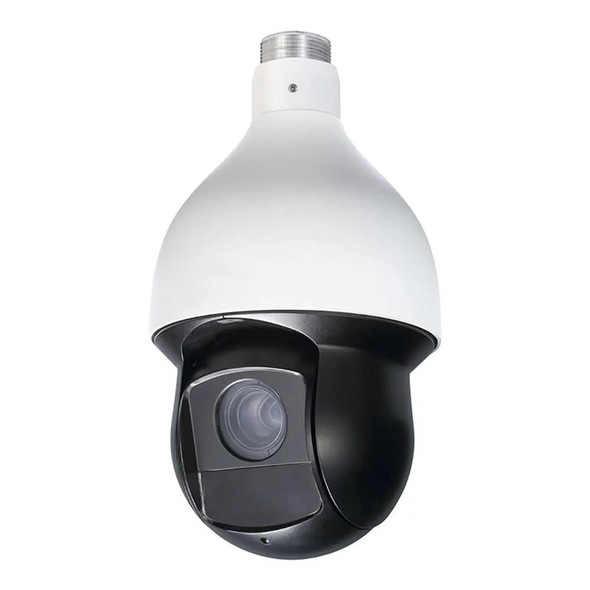
ENS PDN59I432H-XR 4MP Starlight Night Vision Outdoor PTZ IP Security Camera, AI, 32x Optical Zoom
Brand: ENS Security
Part Number: PDN59I432H-XR$1,358.00- Sensor Type : CMOS
- Sensor Size : 1/2.8" Sensor
- Protection Code : IP66
- Environmental : Outdoor
$1,358.00 -

Hikvision DS-2DY3220IW-DE 2MP IR H.265 Outdoor PTZ IP Security Camera
Brand: Hikvision
Part Number: DS-2DY3220IW-DE$1,302.00$1,002.49- Compression : H.265, H.264, MJPEG,
- Field of View (Horizontal) : 58°Field of View 3°Field of View
- Max. FPS and Resolution : 30fps at 1080P
- Lens Type : Motorized (Automatic Zoom) Lens
- Lens Size : 4.7~94mm Lens
- Sensor Type : CMOS
- Sensor Size : 1/2.8" Sensor
- Protection Code : IP66
- Color : White
- Environmental : Outdoor
$1,302.00$1,002.49 -

ENS PDN22T204G-W 2MP Outdoor Wireless PTZ IP Security Camera
Brand: ENS Security
Part Number: PDN22T204G-W$258.00- Sensor Type : CMOS
- Sensor Size : 1/2.7" Sensor
- Protection Code : IP66 IK10
- Environmental : Outdoor
$258.00
Some of the PTZ security cameras come equipped with long distance lenses which allow users to safely zoom in on distant objects without having to manually adjust a lens like a traditional camera.
- Indoor PTZ cameras can be used in conference rooms to hold virtual meetings and move from one speaker to another. Others can be used in specialized applications like oil rigs where it might be exposed to the elements.
- Explosion proof PTZ cameras let users zoom in on dangerous machinery without risking their safety.
There is a perception that PTZ security cameras would be ineffective without a user controlling the camera. Nowadays these cameras can be be configured to rotate without user input. This function is called a tour guard or location presets. Some PTZ security cameras have sensor inputs which allow for the integration of external sensors which can trigger movement to a preset location. This means the camera can be moved to a predefined location like a gate or entrance when movement is detected.
In certain applications, one PTZ security camera can replace several fixed cameras. They can be mounted from the ceiling using a pendant mount to maximize the coverage area around the camera. Other mounting options are available. Horizon PTZ security cameras sit at the top of a pole with a pivoting head which allows the camera to view above the horizon. These types of cameras are typically used on an airport runway where a camera might need to view above eye level. Horizon cameras can also point down but unlike a traditional motorized camera, it is limited by the pole its mounted on.
Selecting the correct PTZ security camera for your application can be difficult. Please feel free to call on of our security camera experts today so we can help you find the right camera for you.
